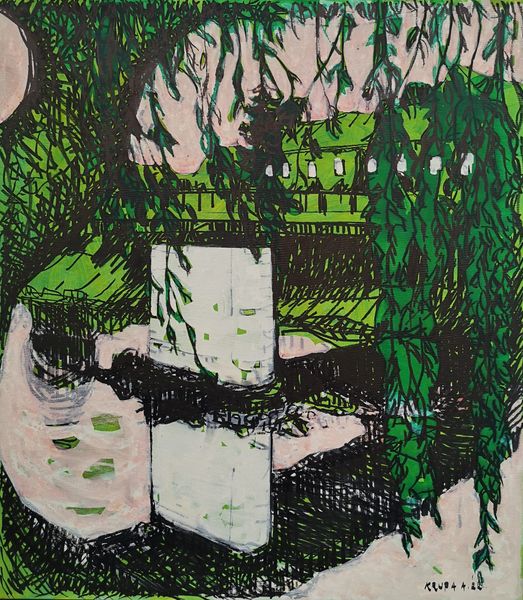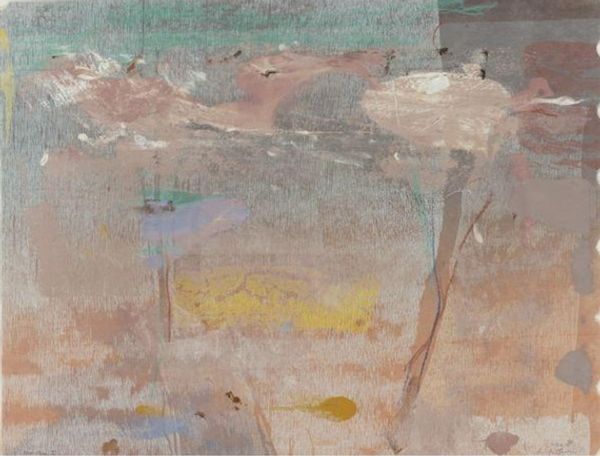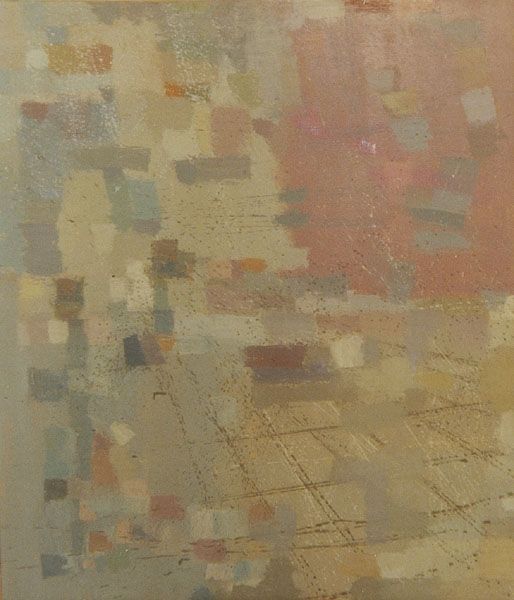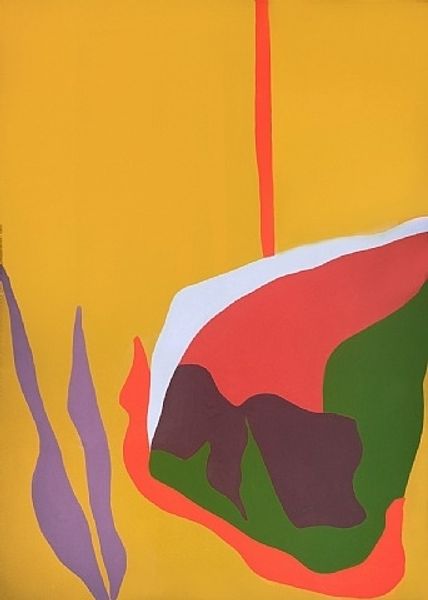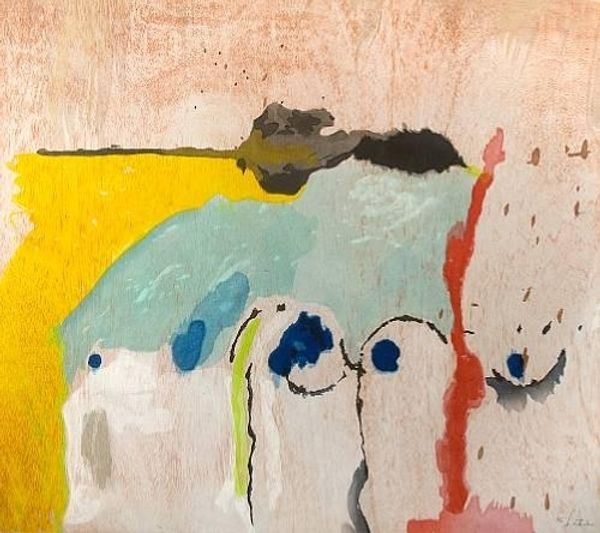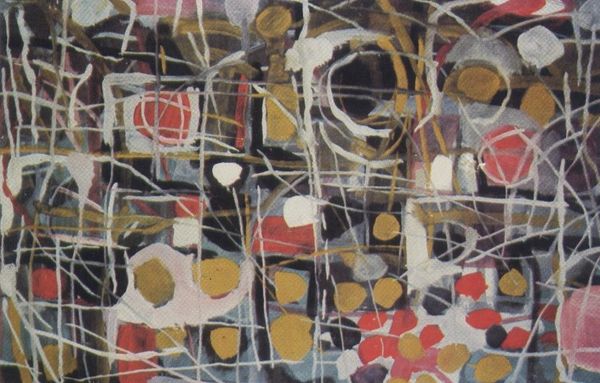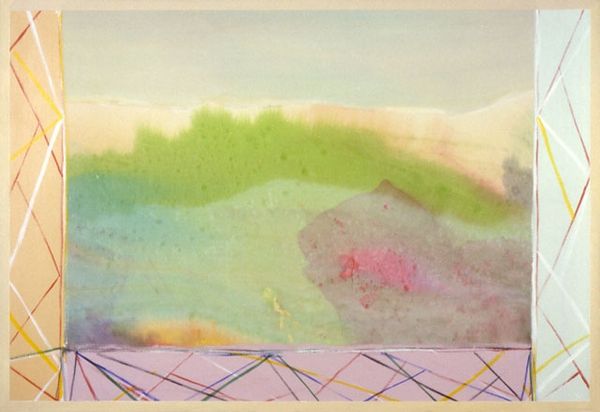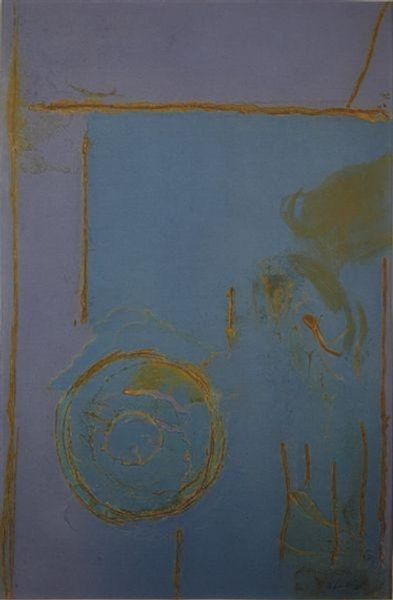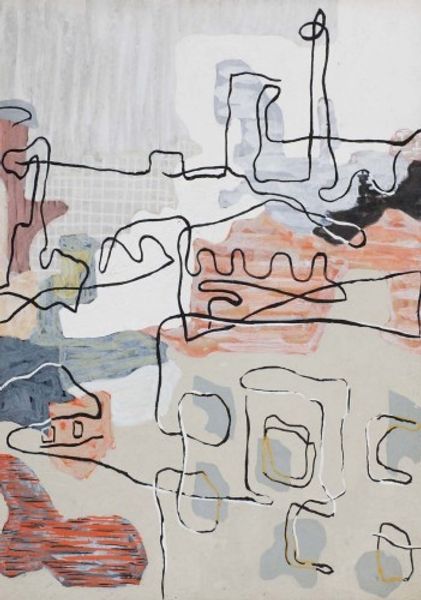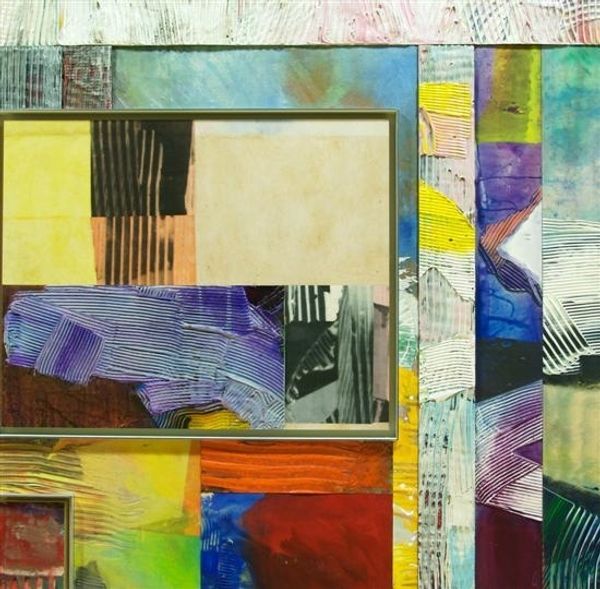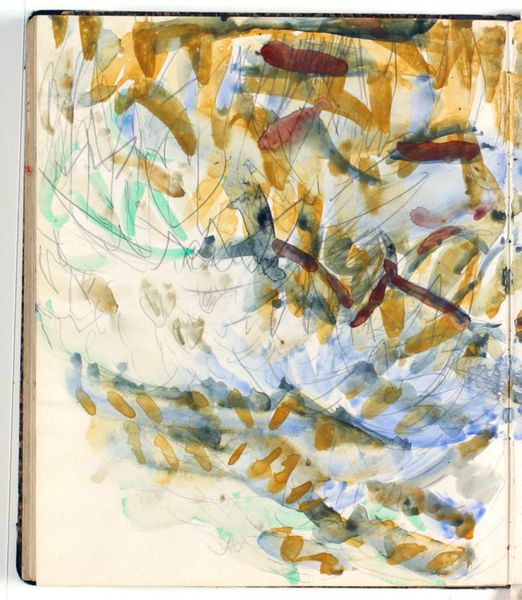
painting, watercolor
#
abstract-expressionism
#
abstract expressionism
#
abstract painting
#
water colours
#
painting
#
landscape
#
watercolor
#
geometric-abstraction
#
abstraction
#
line
Copyright: Kenzo Okada,Fair Use
Curator: Welcome. We're standing before Kenzo Okada's "Young Bamboo (Diptych)," an abstract landscape rendered in watercolor. Editor: My first thought is serenity. The muted greens and gentle shapes give it a calming, almost meditative quality. It also appears deceptively simple. Curator: Precisely. Okada's abstract expressionist works often blur the boundaries between Eastern and Western art traditions. Consider the choice of watercolor; it’s not just a medium, it’s a direct connection to traditional Japanese ink painting. Editor: I see that now. Watercolor is a rather economical medium. How does the use of a seemingly ‘common’ or ‘traditional’ material, inform how it was initially received by the general public and collectors? Curator: Excellent question. During the post-war period, especially amidst the rise of the Gutai group, there was a surge of rethinking what art could be, and by extension, who it was for. Using materials that are humble challenges the elitism associated with the high art world. The act of painting itself and the labour that produces it is front and centre. Editor: And you can really sense the layering, the materiality of the paint on the surface. But what about that division down the center, the diptych format? How does that affect the reading of the landscape? Curator: It introduces a narrative element, almost like two perspectives of the same scene, or two moments in time. Moreover, it creates a sense of openness, defying conventional landscape formats of his period. Editor: Interesting. I hadn’t considered the aspect of defying a standard tradition in the visual expression, even in abstract expressionism. Is this why you feel this is not only an aesthetically pleasing art but also a pivotal marker? Curator: Indeed. Okada wasn't just creating a picture; he was engaging in a cultural dialogue about the meaning of materials and production in art in the middle of the 20th Century. Editor: Looking at the “Young Bamboo” now, and keeping in mind the tension and release of that moment makes me rethink about the history of abstract expressionism. Curator: Hopefully, it also gives one a deeper understanding about the social and material elements that constitutes this beautiful and evocative artwork.
Comments
No comments
Be the first to comment and join the conversation on the ultimate creative platform.
